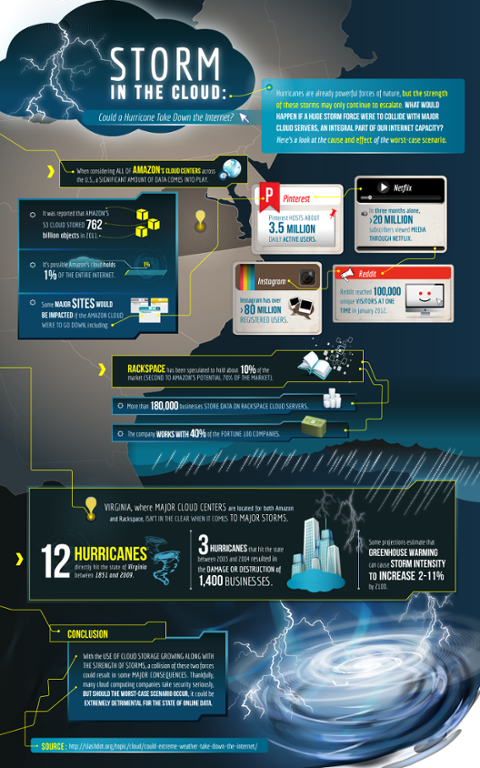In 2012, talking about “getting cloudy” is like talking about “getting electrified.” It’s no longer novel to bet a critical business function on a remotely furnished service that’s delivered via public networks. What’s happened, though, is that the “cloud” label has been vigorously adopted by every vendor of anything related to business or lifestyle computing. Buyers deserve better: let’s raise the standard for what a customer ought to expect from anyone who offers a cloud-labeled concept. First, we should be talking about a service performed, not a product delivered. If a so-called cloud is delivered as a box of hardware, that means delays of capital budgeting before a problem can begin to be solved. Even after implementation, it means being limited to the capacity that’s then owned, without a true cloud’s essentially instant ability to handle bursting workloads.  Further, it’s inherent in the notion of a service that you can see and try what the vendor invites you to buy. Old IT led the buyer into a time tunnel of months or years of spending, hoping to come out in a good place at the end. “Cloud” should absolutely imply the possibility of “try before buy”: the service should be up and running, just waiting for the new subscriber to become one more satisfied customer. Schedule risk: zero. Technology risk: zero. Budget risk: zero. If never completely achievable, these should at least be approachable goals, to a degree that traditional IT models have never been able to achieve. Even this, however, is asking too little. A horseless carriage, no matter how nearly perfected, still does not begin to give us what we expect of a modern car, and the cloud should likewise create and fulfill new potentials for strategic IT. In particular, a cloud should enable both dramatic acceleration and radical risk reduction for developing and deploying new applications. Given that the cloud environment must be architected for secure and reliable sharing, it should follow that customizations are cleanly separated from core capabilities. An upgrade to the database, for example, should not require tedious regression testing (or even a costly rewriting) of stored procedures, any more than a word processor upgrade should require a new round of proofreading of every document previously written. The foundation service should be upgradable at a pace that could never be imagined, and in fact would never be tolerated, by customers of the traditional IT model. Finally, the cloud should improve the state of the world around it:
Further, it’s inherent in the notion of a service that you can see and try what the vendor invites you to buy. Old IT led the buyer into a time tunnel of months or years of spending, hoping to come out in a good place at the end. “Cloud” should absolutely imply the possibility of “try before buy”: the service should be up and running, just waiting for the new subscriber to become one more satisfied customer. Schedule risk: zero. Technology risk: zero. Budget risk: zero. If never completely achievable, these should at least be approachable goals, to a degree that traditional IT models have never been able to achieve. Even this, however, is asking too little. A horseless carriage, no matter how nearly perfected, still does not begin to give us what we expect of a modern car, and the cloud should likewise create and fulfill new potentials for strategic IT. In particular, a cloud should enable both dramatic acceleration and radical risk reduction for developing and deploying new applications. Given that the cloud environment must be architected for secure and reliable sharing, it should follow that customizations are cleanly separated from core capabilities. An upgrade to the database, for example, should not require tedious regression testing (or even a costly rewriting) of stored procedures, any more than a word processor upgrade should require a new round of proofreading of every document previously written. The foundation service should be upgradable at a pace that could never be imagined, and in fact would never be tolerated, by customers of the traditional IT model. Finally, the cloud should improve the state of the world around it:
- With customers assured of the scalability, availability, security, and ease of integration of new application providers, the broad adoption of open cloud platforms can lower the barriers to market entry for entrepreneurs—and for talent-rich, but capital-poor, emerging countries.
- With massive efficiencies in hardware, achieved by hugely reducing the number of redundant copies of operating systems and database engines and the like, the cloud can accomplish one or two orders of magnitude improvement in power consumption and carbon footprint per unit of business workload performed.
These are not theoretical benefits, but are being demonstrably achieved today among users of proven cloud platforms. I completely understand the impulse that leads a vendor to proffer a “private cloud”—or a buyer to sell that idea to internal stakeholders. If I were a CIO charged with improving my hardware utilization, increasing flexibility of workload management, and “future-proofing” my systems against various disruptions, a “private cloud initiative” would probably be easier to fund than a “data center modernization.” What’s vital, though, is that buyers not fool themselves. The benefits of a true cloud—faster and less risky innovation, flexible and nearly unbounded peak-load capacity, startling improvements of operating efficiency—are not achievable by incremental repackaging of what’s been done before. True clouds are here, and every IT user should be vigorously exploring their benefits. Peter Coffee spent ten years as a practicing engineer in petrochemical and aerospace projects before his 19-year detour as Technology Editor at PCWeek (which later became eWEEK). He's now VP and Head of Platform Research at Salesforce.com, where he works with CxOs and ISVs to advance the state-of-the-art of cloud-based application development. Image: lapetitelumiere/Shutterstock.com

